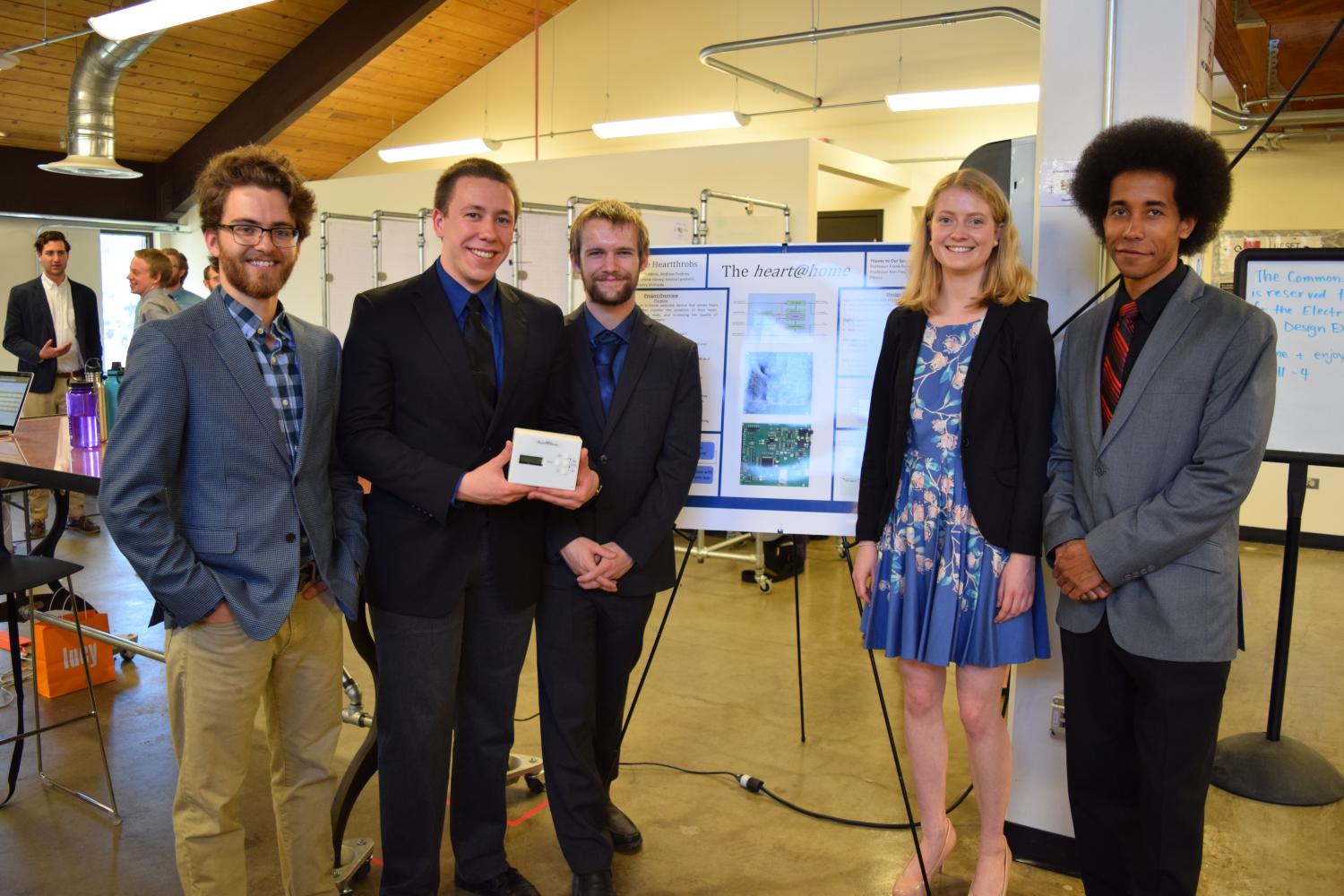The Heartthrobs

Thank you to sponsors Plexus and professors Frank Barnes & Kim Frey!
Congestive heart failure is a condition that occurs when the heart does not pump blood as well as it should, leading to further health problems. Once manifested, it becomes difficult for persons with heart failure to manage this condition on their own. Heart failure can exist as a dormant condition for extended periods of time, leading to an increased need for additional monitoring and hospital care. Because there are few reliable, self-monitoring methods for determining if the heart has re-entered an unstable state, one of two situations often occurs. First, the patient returns to the hospital unnecessarily, resulting in extra cost and time for the patients and their doctors. Alternatively, the patient does not return to the hospital as early as they should, resulting in an increased risk of death or serious complications. With current home monitoring methods, if a patient’s condition worsens, they frequently have no more than three days to check in to a hospital without serious consequences. This combination of sudden-onset symptoms and relying on patient self-monitoring leads to many trips to emergency rooms that could be avoided by a more accurate method of early detection.
The heart@home is an in-home wearable device that allows heart failure patients to better monitor the condition of their heart, reducing emergency room visits and increasing the quality of CHF management. The heart@home allows patients to proactively monitor their condition without making frequent trips to their doctor or the emergency room. The patients can do this while living their lives with minimal disruption. This is accomplished by taking a phonocardiogram and electrocardiogram and transmitting these signals to the doctor. Additionally, wearing the device and taking a measurement once daily would allow patients to detect changes in their condition earlier than present methods allow. Currently, patients are told to monitor their weight and come in if they experience rapid weight gain. However, this often means that patients will only know to go to the hospital after significant issues have already developed. The heart@home would allow doctors to monitor externally invisible changes in the patient's condition, allowing patients to seek treatment earlier as needed.
Patients
The home users are adult heart failure patients who want to take charge of their heart monitoring in order to reduce unnecessary visits to the doctor and increase early detection of issues. They must be willing to familiarize themselves with a new device, use it daily, and live in the United States.
Doctors/Hospital Staff
The doctors involved must feel that new technology can enable them to provide better care for their patients. The technology would enable hospitals to reduce unnecessary visits, freeing up resources for other needs.
Insurance Providers
The home user may obtain heart@home through their insurance company. The insurance companies interested in heart@home would be companies that want to keep patients out of the emergency room as much as possible, thus saving costs and increasing patient satisfaction.

